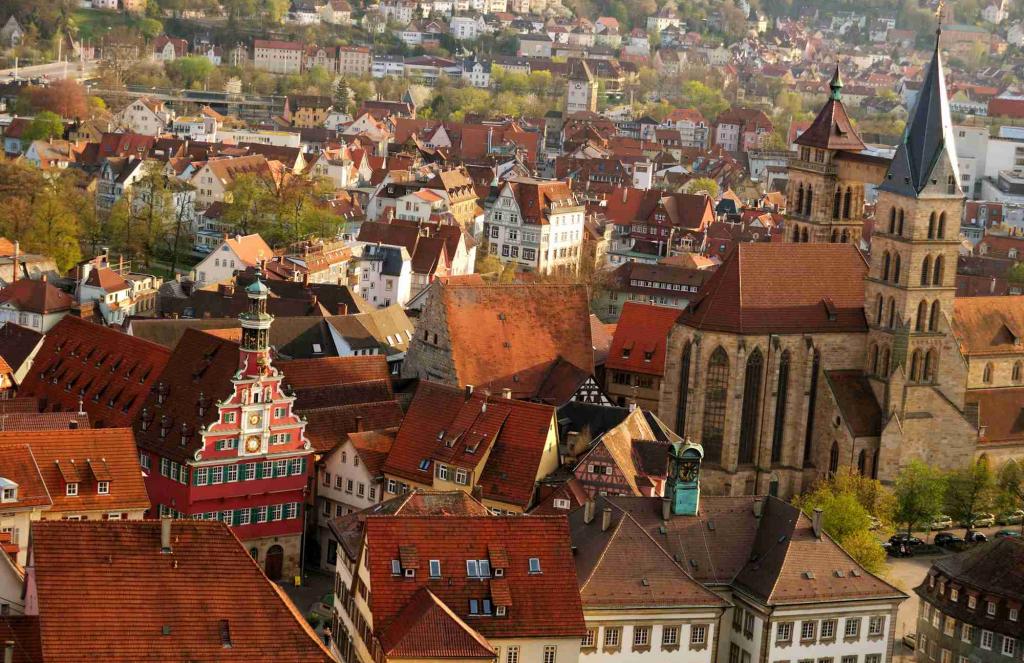Thessaloniki gets ready for its metro launch in November
The underground rapid transit lines have been under construction for almost two decades due to various project delays
 TheMayor.EU logo
TheMayor.EU logo 
Stuttgart is not a grid-built city and implementing superblocks might not be as easy as in Barcelona, Source: Depositphotos
A decision in this direction came through the city’s new sustainable development plan
On 4 April, the local government of Stuttgart decided to create three Superblocks, modelled after Barcelona. The decision came with the local government accepting a sustainable development plan with 200 measures.
The plan has a host of measures focusing on traffic calming and offering people more ways to get around the city apart from personal cars. The plan also pinpoints the targets and goals the city needs to achieve to become climate-neutral by the year 2035.
Superblocks, also known as Superilla were an idea of Barcelona’s Mayor Ada Colau and were first introduced in 2016. The concept focuses on reorganising traffic in certain areas of the city to create more public space with quiet and safe streets for cafes and greenery.
Barcelona is uniquely suited for such a concept because large parts of the city are built along a uniform block grid. The Superblock thus takes that idea and expands it, creating a collection of blocks, 3x3 and groups them, restricting car movement inside the block.
In turn, this allows citizens to retake those streets, which can now be used as playgrounds, meeting spaces, squares and anything else in between. At the same time, the reorganised areas see less traffic, less pollution and less noise, raising the quality of life for citizens.
With Stuttgart that development is still possible, although the city is largely not designed around a grid and sits in a valley, incorporating the nearby hills into its urban fabric.
Nevertheless, local authorities have already tried to use pop-up Superblocks, during Stuttgart Mobility Week, back in October 2021. They included one in Augustenstrasse and one in Wanderbaumallee.
Felix Märker from the Stuttgart Office for Urban Planning and Housing was quoted in a press statement explaining that the initiative provoked a mixed reaction at the time. Nevertheless, he believes, it had an impact and the city would try and incorporate it in some form going forward.
Here are the key points of Stuttgart’s sustainable development plan:

The underground rapid transit lines have been under construction for almost two decades due to various project delays

Now you can get your wine in Talence by paying directly in Bitcoin

That’s because the state has to spend money on updating the railway infrastructure rather than subsidizing the cost of the popular pass

Rethinking renewable energy sources for the urban landscape

The examples, compiled by Beyond Fossil Fuels, can inform and inspire communities and entrepreneurs that still feel trepidation at the prospect of energy transition

Now you can get your wine in Talence by paying directly in Bitcoin

The 10th European Conference on Sustainable Cities and Towns (ESCT) sets the stage for stronger cooperation between the EU, national and local level to fast track Europe's transition to climate neutrality.

At least, that’s the promise made by the mayor of Paris, Anne Hidalgo

The underground rapid transit lines have been under construction for almost two decades due to various project delays

At least, that’s the promise made by the mayor of Paris, Anne Hidalgo

Hostal de Pinós is located in the geographical centre of the autonomous region

Despite its church-y name, the district has long been known as the hangout spot for the artsy crowds

Urban dwellers across the EU are having a say in making their surroundings friendlier to people and the environment.

Forests in the EU can help green the European construction industry and bolster a continent-wide push for architectural improvements.

Apply by 10 November and do your part for the transformation of European public spaces

An interview with the Mayor of a Polish city that seeks to reinvent itself

An interview with the newly elected ICLEI President and Mayor of Malmö

A conversation with the Mayor of Lisbon about the spirit and dimensions of innovation present in the Portuguese capital














